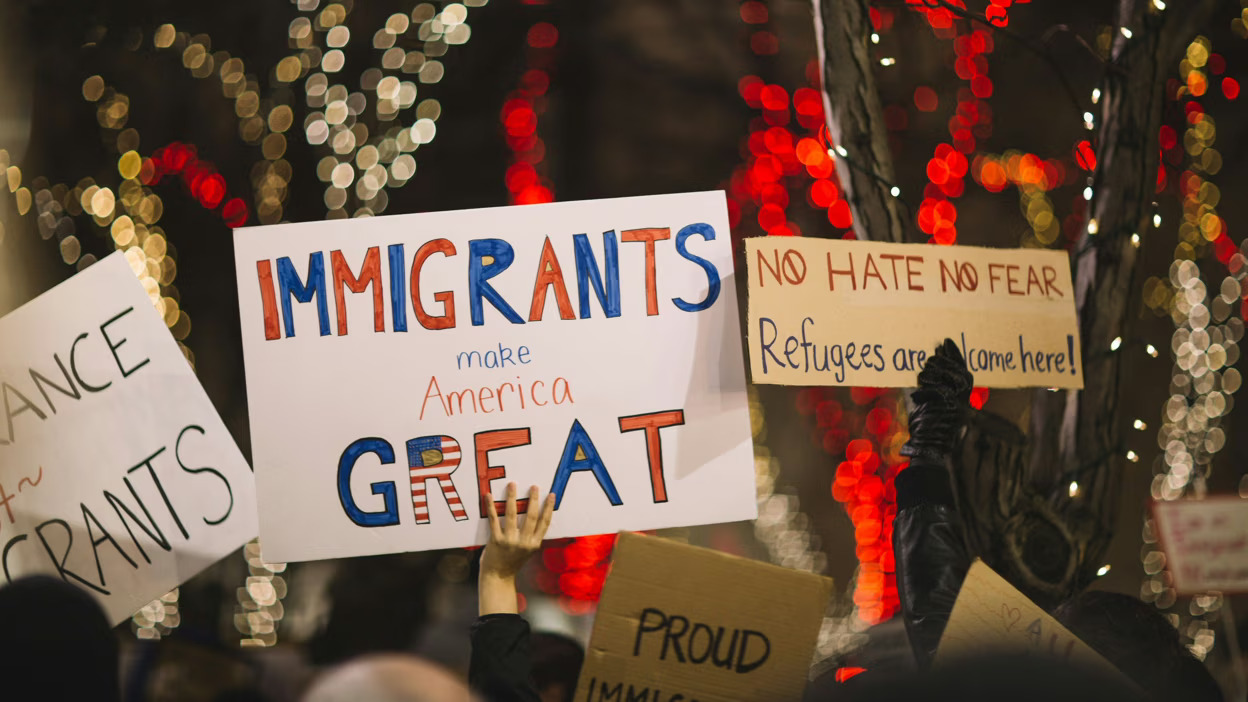Research and Analysis

Understanding Prosecutorial Discretion in Immigration Law
Frustrated by the lack of comprehensive immigration reform, many advocates, from grassroots community organizers to Members of Congress, have begun calling on President Obama to take action. They want the President and his administration to use the power of the executive branch to defer removals, revisit current policies and priorities, and interpret the law as compassionately as possible. The specific requests vary greatly. Senators Richard Durbin (D-IL) and Richard Lugar (R-IN), for instance, last year asked the Department of Homeland Security (DHS) to defer the removal of young people who qualified for legal permanent residence until such time as their legislation, the DREAM Act, became law. In April 2011, nineteen Democratic and Independent U.S. Senators, including Senators Harry Reid (D-NV), Richard Durbin (D-IL), and Kristin Gillibrand (D-NY), reiterated the call to stop the removal of all students who meet the strict requirements of the DREAM Act. While the DREAM Act is frequently invoked, many community groups have also called for exercising prosecutorial discretion in individual cases by declining to put people in removal proceedings, terminating proceedings, or delaying removals in cases where people have longstanding ties to the community, U.S.-citizen family members, or other characteristics that merit a favorable exercise of discretion. Read More

Deportation in the Time of Cholera: DHS’s Mixed Response to Haiti’s Earthquake
The dramatic announcement on May 17, 2011 that the Department of Homeland Security (DHS) would extend Temporary Protected Status (TPS) for another eighteen months to Haitians, including those who entered the country no later than January 12, 2011, is a welcome step forward in the saga of the Haitian earthquake. The decision to extend and redesignate Haiti for TPS has been a long time coming and reflects more than a year of solid effort on the part of advocates and the Haitian community. In many ways, DHS’s handling of the devastating January 2010 earthquake in Haiti is emblematic of the triumphs and tribulations discussed in a recent report issued by the Immigration Policy Center, Second Annual DHS Progress Report: An Analysis of Immigration Policy in the Second Year of the Obama Administration. This critique found that the immigration agencies appear to be tackling issues affecting Haitians independently, failing to coordinate their enforcement and benefits-oriented policies. At times, critical information was disseminated in a limited and ad hoc fashion, generating confusion and unease about DHS policies. Observers have been left questioning how DHS’s priorities are ordered and whether they are integrated at the department level. DHS’s latest actions offer hope that a more coordinated, thoughtful, and humanitarian approach will prevail. Read More

The Migrant Integration Policy Index (MIPEX III)
How U.S. Integration Policy Stacks Up Against Other Countries Integration is an often overlooked but key component of U.S. immigration policy. Successful integration of immigrants fuels their success, strengthens communities, and builds bridges between newcomers and other community members. Time and again, the influx of immigrants into a community has been shown to reverse economic decline and breathe new life into urban areas, small towns, and rural communities. Moreover, integration can be a key to entrepreneurship and future economic growth. For example, research by Richard Florida and Charlotta Mellander found that nations which focus more on immigrant integration have higher levels of economic competitiveness, are more innovative, and have higher rates of entrepreneurship. Understanding how federal and state laws facilitate or hinder integration is therefore an important component of setting integration policy. Read More

Revitalizing the Golden State
California is home to nearly 10 million immigrants, more than one quarter of the state’s population. Of those, 2.7 million are undocumented, and the vast majority of them have been living in the United States for more than 10 years. California’s immigrant contributions to the Golden State cannot be overstated. From Cesar Chavez, the pioneering agricultural labor-rights leader in the 20th century to Sergei Brin, the Russian entrepreneur behind one of the 21st century’s most revolutionary companies, Google Inc., the foreign born and their descendants are woven into the state’s cultural and economic fabric. Still, that reality has not prevented some Californians, frustrated with our broken federal immigration system, to call for an Arizona-style “papers please” approach. The stated goal of this new wave of state-based enforcement legislation is to trigger a mass exodus of undocumented immigrants, by making “attrition through enforcement” the policy of state and local government agencies. The threshold question that proponents of S.B.1070-style legislation have failed to answer is whether that goal serves the economic interests of the state’s constituents. Read More

Q&A Guide to Arizona’s Immigration Law
One year after the passage of Arizona’s tough new immigration law (SB1070), both opponents and proponents are attempting to assess the impact the new law may have on residents of Arizona—citizens and immigrants alike. A federal district court ruling preliminarily enjoined large parts of the controversial law, meaning that those portions of the new law cannot be implemented, and the Ninth Circuit Court of Appeals upheld the preliminary injunction. Other lawsuits have been filed challenging the constitutionality of the law and have yet to be ruled on, opponents have mounted boycotts, and numerous polls show that a majority of the public both supports the Arizona law and comprehensive immigration reform. Furthermore, despite criticism of SB1070 from Republicans, Democrats, police officials, religious leaders, and civil-rights leaders, legislators in many states have introduced or are considering introducing similar legislation. Read More

Debunking the Myth of “Sanctuary Cities”
There is much confusion about the term “sanctuary city.” The term is often used derisively by immigration opponents to blast what are best described as community policing policies. Critics claim that these cities and states provide “sanctuary” to undocumented immigrants, but research shows that the opposite is true. In fact, community policing policies are about providing public safety services, not sanctuary, to both immigrant residents and the entire community. Crime experts, including hundreds of local police officers, have found that cities with community policing policies continue to work closely with DHS and have built bridges to immigrant communities that have improved their ability to fight crime and protect the entire community. Historically, the federal government has enforced civil immigration law, and state and local police have focused on enforcing criminal law. However, propelled by increased frustration with the nation’s broken immigration system and by growing anti-immigrant sentiment, politicians’ demands for state and local police to take on an increased role in immigration enforcement have grown exponentially. This culminated in the passage of Arizona’s notorious SB1070 law in 2010, which would turn Arizona state and local police officers into deportation agents. Read More

Unauthorized Immigrants Pay Taxes, Too
Estimates of the State and Local Taxes Paid by Unauthorized Immigrant Households Tax Day is an appropriate time to underscore the often-overlooked fact that unauthorized immigrants pay taxes. The unauthorized, like everyone else in the United States, pay sales taxes. They also pay property taxes—even if they rent. At least half of unauthorized immigrants pay income taxes. Add this all up and it amounts to billions in revenue to state and local governments. The Institute for Taxation and Economic Policy (ITEP) has estimated the state and local taxes paid in 2010 by households that are headed by unauthorized immigrants. These households may include members who are U.S. citizens or legal immigrants. Collectively, these households paid $11.2 billion in state and local taxes. That included $1.2 billion in personal income taxes, $1.6 billion in property taxes, and $8.4 billion in sales taxes. The states receiving the most tax revenue from households headed by unauthorized immigrants were California ($2.7 billion), Texas ($1.6 billion), Florida ($806.8 million), New York ($662.4 million), and Illinois ($499.2 million) {See Figure 1 and Table 1}. These figures should be kept in mind as politicians and commentators continue with the seemingly endless debate over what to do with unauthorized immigrants already living in the United States. In spite of the fact that they lack legal status, these immigrants—and their family members—are adding value to the U.S. economy; not only as taxpayers, but as workers, consumers, and entrepreneurs as well. Read More

Second Annual DHS Progress Report
In its second year under the Obama Administration, the Department of Homeland Security (DHS)—which is responsible for the nation’s three immigration agencies (USCIS, CBP, and ICE)—continues to struggle with its competing missions of providing immigration benefits and enforcing immigration laws, all within the context of an outdated and broken immigration system. Over the past year, while waiting for Congress to act, the Administration has increased its emphasis on enforcement and deportation and denied its ability to provide administrative relief. This report finds that, while DHS has made significant progress in some areas, there is much room for improvement. The report recommends that DHS act in line with its own stated priorities and exert its executive authority to bring about much-needed reforms that can be done in the absence of Congressional action. Read More

The Diversity Immigrant Visa Program: An Overview
This fact sheet provides an overview of the diversity visa program, the requirements and security checks currently in place, and demographic information about recipients. Read More

The U.S. Economy Still Needs Highly Skilled Foreign Workers
It might seem that persistently high unemployment rates over the past few years have rendered moot the debate over whether or not the United States really “needs” the highly skilled foreign workers who come here on H-1B temporary visas. But the demand for H-1B workers still far outstrips the current cap of only 65,000 new H-1B visas that can be issued each year. In fact, from fiscal year 1997 to 2011, employers exhausted this quota before the fiscal year was over (except from 2001 to 2003, when the ceiling was temporarily increased). As a number of studies make clear, the presence in a company of highly skilled foreign workers whose abilities and talents complement those of native-born workers actually creates new employment opportunities for American workers. Yet the arbitrary numerical limits placed on H-1Bs are incapable of responding to the changing demand for H-1B workers. This is unfortunate, given that the international competitiveness of the U.S. economy will continue to depend heavily on the contributions of H-1B professionals and other high-skilled workers from abroad for many decades to come. Read More
Make a contribution
Make a direct impact on the lives of immigrants.
